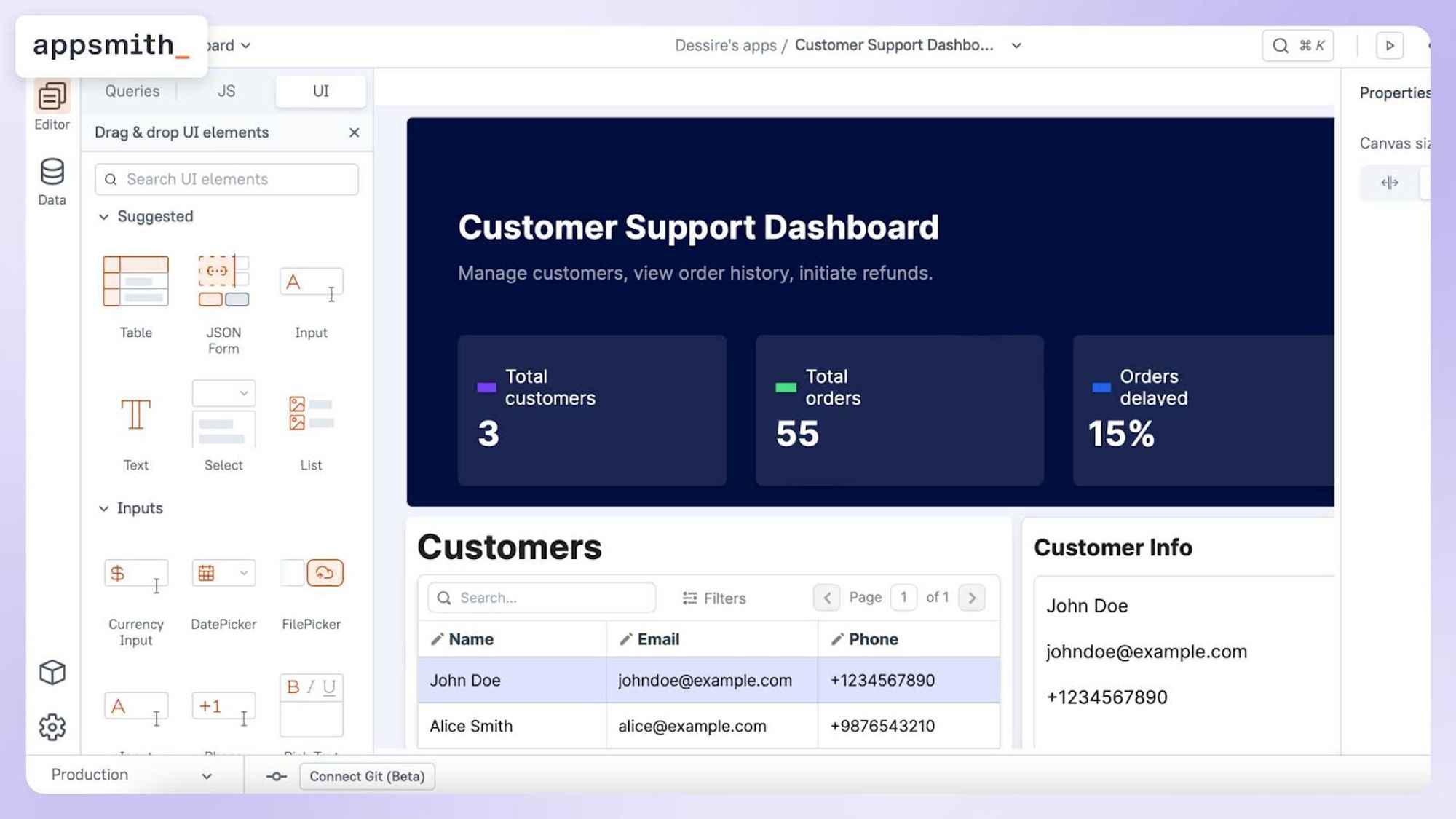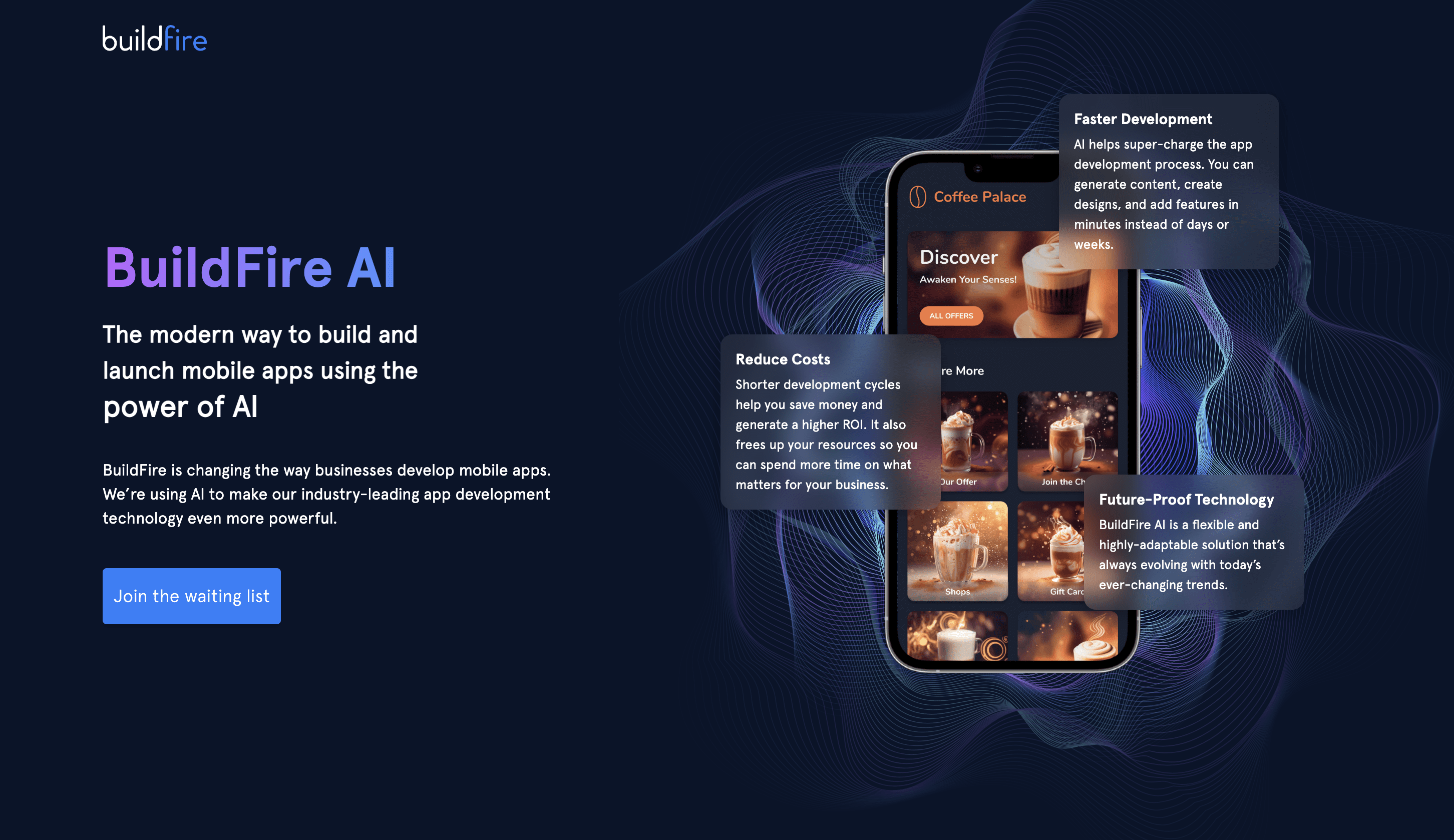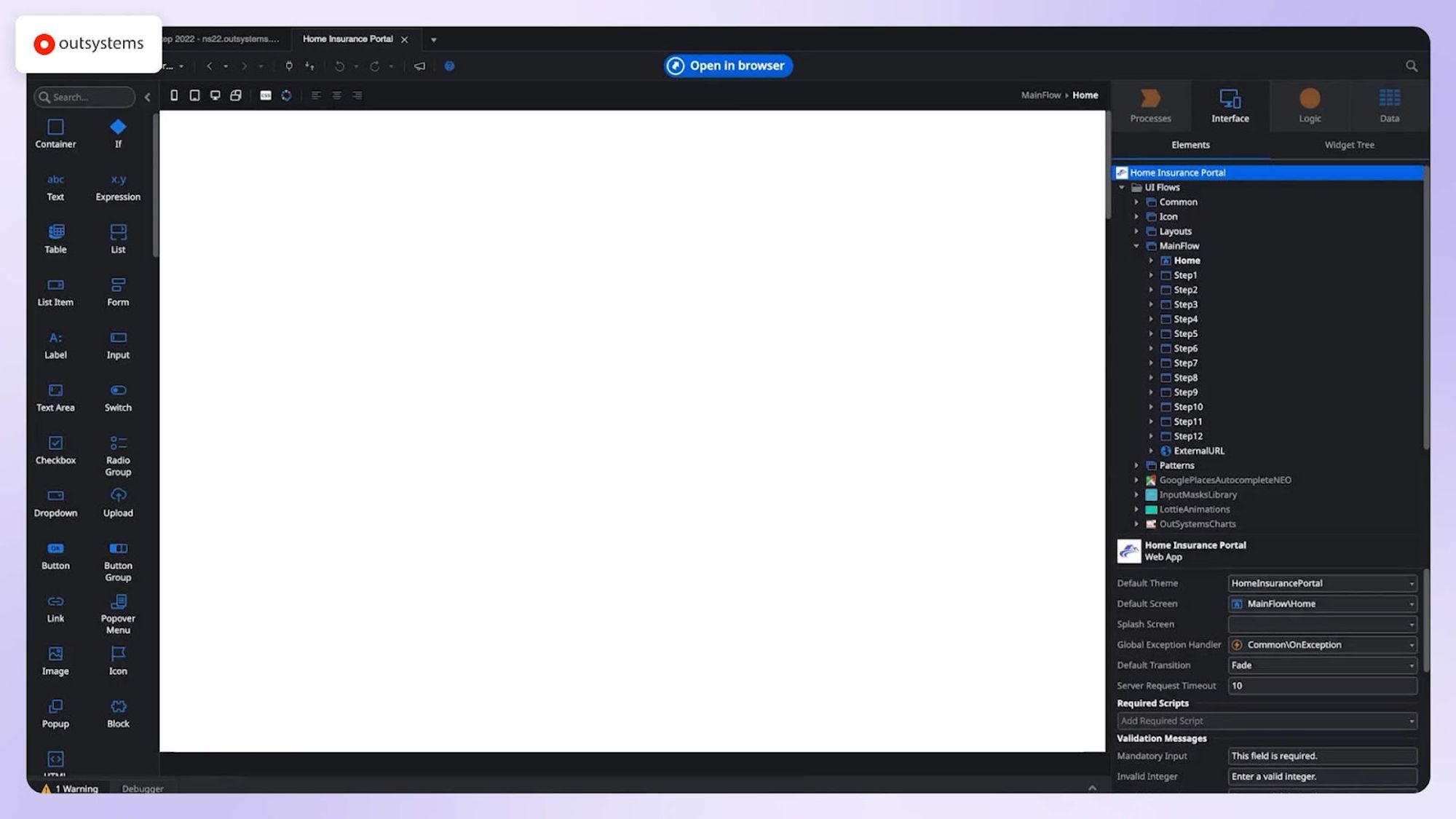Low-Code/No-Code AI Automation: The Complete Guide for 2025
Introduction
Have you ever wished you could build smart AI applications without writing a single line of code? Well, that’s exactly what low-code/no-code AI automation is all about! This game-changing approach is taking the tech world by storm, making AI tools accessible to everyone – not just coding experts.
According to Gartner, by 2025, a whopping 70% of new applications developed by businesses will use low-code/no-code technologies. That’s nearly triple the number from just a few years ago! 🚀
In this guide, I’ll walk you through everything you need to know about low-code/no-code AI automation – from the basics to choosing the right tools and implementing them in your business. Whether you’re a business leader wanting to boost efficiency, a team manager looking to empower your staff, or just curious about this exciting technology, you’re in the right place!
Understanding Low-Code/No-Code AI Automation
What Is Low-Code/No-Code AI Automation?
Low-code/no-code AI automation refers to tools and platforms that let you create AI-powered applications with minimal or zero coding knowledge. Instead of writing complex code, you can use visual interfaces, drag-and-drop components, and pre-built templates to build sophisticated AI solutions.
Think of it like building with LEGO blocks instead of having to make each block from scratch. You get to focus on what you want to create, not how to code it!

How Does It Differ From Traditional Development?
Traditional software development requires:
- Extensive coding knowledge
- Months of development time
- Specialized team of developers
- Complex debugging and testing
Low-code/no-code AI automation offers:
- Visual development interfaces
- Days or weeks to completion
- Accessibility for non-technical people
- Built-in testing and validation
The Evolution From Basic Automation to AI-Powered Solutions
Low-code/no-code tools have come a long way! Early platforms focused on simple workflow automation and basic apps. Today’s tools include powerful AI capabilities that can:
- Understand natural language requests
- Process and analyze data automatically
- Make intelligent predictions
- Generate content and code
- Automate complex decision-making
The Role of AI in Transforming Low-Code/No-Code Platforms
AI is supercharging low-code/no-code platforms in amazing ways:
- Natural Language Processing: You can describe what you want in plain English, and AI translates your words into functional applications.
- Smart Suggestions: AI recommends features and improvements based on your project goals.
- Automatic Testing: AI can spot potential issues before they become problems.
- Data Analysis: Built-in AI helps make sense of your data without complex queries.
As one expert in the Forbes Tech Council noted, “AI-driven low-code/no-code solutions can help free coders from routine coding jobs and other repetitive tasks, allowing them to focus more time on strategy, security and innovation.”
Benefits of Low-Code/No-Code AI Automation
Benefits of Low-Code/No-Code AI Automation
Accelerated Development Timelines
How would you like to build in days what used to take months? Low-code/no-code AI platforms dramatically speed up development. A project that might have taken 3-6 months with traditional coding can often be completed in just 2-4 weeks!
This speed boost happens because:
- Pre-built components eliminate coding from scratch
- Visual interfaces reduce development complexity
- AI assists with suggestions and automations
- Testing is often built into the platform

Democratization of AI Development Capabilities
One of the most exciting benefits is how these tools open AI development to everyone. No longer limited to data scientists and programmers, AI tools can now be built by:
- Business analysts
- Marketing teams
- Customer service representatives
- Operations managers
- HR professionals
- And virtually anyone with domain expertise!
This democratization leads to more diverse, creative solutions that address real business needs because the people building them understand those needs firsthand.
Cost Reduction and Resource Optimization
Let’s talk dollars and cents. Traditional AI development is expensive:
- Specialized developers earning $100K-$150K+ annually
- Lengthy development cycles tying up resources
- Ongoing maintenance costs
Low-code/no-code AI platforms can reduce these costs by:
- Requiring fewer specialized developers
- Cutting development time by 50-80%
- Simplifying maintenance and updates
- Enabling business users to handle many tasks internally
Scalability and Flexibility
As your business grows and changes, can your AI solutions keep up? With low-code/no-code platforms, they can!
Most modern platforms offer:
- Cloud-based deployment for easy scaling
- Modular components that can be reused
- Simple updates without disrupting operations
- The ability to start small and expand as needed
Improved Innovation Cycles
Have you ever had a great idea but couldn’t implement it because development would take too long? Low-code/no-code AI changes that equation.
With faster development times, businesses can:
- Test ideas quickly with minimal investment
- Fail fast and learn from mistakes
- Iterate based on real feedback
- Bring innovations to market before competitors
Integration Capabilities with Existing Systems
A common concern is: “Will this work with what we already have?” The good news is that most low-code/no-code AI platforms are designed with integration in mind.
Look for platforms that connect with:
- Common databases (SQL, Oracle, MongoDB)
- Popular business tools (Salesforce, SAP, Office 365)
- API endpoints for custom services
- Legacy systems through connectors
Top Low-Code/No-Code AI Automation Tools for 2025
AI-Powered App Builders
1. BuildFire AI
BuildFire AI lets you create mobile apps by answering simple questions about your business. The AI generates content, suggests features, and even pulls your branding from your website automatically.
Best for: Mobile app creation
Pricing: From $89/mo
Key AI Features: App generation, content creation, design automation
2. Appsmith
Appsmith offers an open-source platform with powerful AI capabilities. It connects to various data sources and LLMs (Large Language Models) like OpenAI and Google AI. Its drag-and-drop interface makes building AI-powered dashboards and tools simple.
Best for: Custom business apps
Pricing: Free, $40/user/mo for Business tier
Key AI Features: LLM integration, AI Assistant, custom AI apps
3. OutSystems
OutSystems combines low-code development with AI assistance through its AI Mentor System, which guides developers throughout the software lifecycle.
Best for: Enterprise applications
Pricing: From $36,300/year
Key AI Features: AI Mentor System, full-stack development

Process Automation Platforms
1. Levity AI
Levity AI focuses on workflow automation powered by AI. You can build models to handle repetitive tasks triggered by specific events. It connects with CRMs, email providers, and management systems.
Best for: Workflow automation
Pricing: Custom pricing
Key AI Features: Document processing, email handling, workflow automation
2. E42
E42 creates what they call “AI co-workers” that handle cognitive process automation. These AI assistants can take on specific roles like accounts payable executives or customer service representatives.
Best for: Enterprise automation
Pricing: Custom pricing
Key AI Features: AI co-workers, cognitive automation
3. DataRobot
DataRobot uses generative AI and predictive workflows to improve business outcomes. It’s particularly useful for industries like banking, healthcare, insurance, and manufacturing.
Best for: Predictive analytics
Pricing: Custom pricing
Key AI Features: Automated machine learning, predictive modeling
Comparison of Popular Tools
| Tool | Best For | Pricing | Key AI Features | Learning Curve |
|---|---|---|---|---|
| BuildFire AI | Mobile app creation | From $89/mo | App generation, content creation | Easy |
| Appsmith | Custom business apps | Free, $40/user/mo | LLM integration, AI Assistant | Moderate |
| Levity AI | Workflow automation | Custom pricing | Document processing, email handling | Easy |
| E42 | Enterprise automation | Custom pricing | AI co-workers, cognitive automation | Moderate |
| OutSystems | Enterprise applications | From $36,300/year | AI Mentor System | Moderate |
| DataRobot | Predictive analytics | Custom pricing | Automated machine learning | Moderate-High |
Real-World Applications and Use Cases
Business Process Automation
Low-code/no-code AI is revolutionizing how businesses handle everyday processes:
- Invoice Processing: AI can read, categorize, and process invoices automatically, reducing manual data entry by up to 90%.
- Employee Onboarding: Automated document verification, equipment provisioning, and training assignment can cut onboarding time in half.
- Approval Workflows: Smart routing of approvals based on content, urgency, and available approvers speeds up decision-making.
For example, a manufacturing company used a no-code AI platform to automate their quality inspection process. The AI analyzes images from the production line to identify defects, reducing inspection time by 75% and improving accuracy by 30%.
Customer Service and Engagement
AI-powered customer service is no longer just for tech giants:
- Intelligent Chatbots: No-code platforms allow businesses to create chatbots that understand customer intent and provide helpful responses.
- Sentiment Analysis: Track customer satisfaction in real-time across emails, chats, and social media.
- Personalized Recommendations: Create systems that suggest products or content based on customer behavior.
A mid-sized retailer implemented a no-code AI solution that analyzes customer support tickets and automatically routes them to the right department. This reduced response time by 60% and increased customer satisfaction scores by 25%.
Data Analysis and Business Intelligence
Making sense of data doesn’t require a data science degree anymore:
- Predictive Forecasting: Create models that predict sales, resource needs, or maintenance requirements.
- Anomaly Detection: Set up systems that flag unusual patterns in data that might indicate problems or opportunities.
- Automated Reporting: Generate insights and visualizations automatically from your data sources.
One financial services company used a low-code AI platform to predict which customers were most likely to be interested in new investment products. This targeted approach increased their conversion rate by 35% while reducing marketing costs.
Content Generation and Management
Content creation gets a boost from AI automation:
- Marketing Materials: Generate social media posts, email campaigns, and ad copy.
- Document Processing: Extract key information from forms and documents automatically.
- Content Moderation: Filter user-generated content for inappropriate material without manual review.
A media company implemented a no-code AI solution that helps journalists find relevant information and generate first drafts of news updates, increasing their content production by 40%.
Implementation Guide: How to Get Started
Assessing Your Automation Needs
Before diving in, ask these key questions:
- What processes take the most time in your organization?
- Which tasks are repetitive and rule-based?
- Where do errors commonly occur in your workflows?
- What data sources do you need to connect?
- Who will use the automated systems?
Make a list of potential automation candidates and rank them by:
- Potential time/cost savings
- Implementation complexity
- Strategic importance
Selecting the Right Platform
With so many options, how do you choose? Consider these factors:
- Use case match: Does the platform specialize in your primary need?
- Integration requirements: Can it connect with your existing systems?
- Scalability: Will it grow with your business?
- Pricing structure: Does it fit your budget as you scale?
- Support and community: Is help available when you need it?
- Security features: Does it meet your compliance requirements?
Don’t be afraid to request demos and trial periods before committing!
Step-by-Step Implementation Process
- Start small: Choose a contained project with clear success metrics
- Gather requirements: Document exactly what the solution needs to do
- Select your tool: Based on your requirements
- Design your solution: Map out workflows and user interfaces
- Build a prototype: Create a minimum viable version
- Test thoroughly: With real users and data
- Deploy: Roll out to intended users
- Monitor and improve: Track performance and make adjustments
Integration with Existing Systems
Most businesses already have systems in place. Here’s how to integrate smoothly:
- API connections: Use built-in connectors or create custom API connections
- Data synchronization: Ensure data stays consistent across systems
- Authentication: Set up secure, unified login systems where possible
- Progressive implementation: Replace components gradually rather than all at once
Training and Adoption Strategies
Even the best automation fails if people don’t use it. Ensure success with:
- Stakeholder involvement: Include end users in the design process
- Clear documentation: Create simple guides with screenshots
- Training sessions: Offer live and recorded options
- Champions: Identify enthusiastic early adopters who can help others
- Feedback loops: Make it easy for users to report issues and suggest improvements
Measuring Success: KPIs and ROI
Key Performance Indicators to Track
What gets measured gets improved! Track these metrics:
- Time savings: Hours saved per week/month
- Error reduction: Decrease in mistakes or exceptions
- Process speed: Reduction in cycle time
- User adoption: Percentage of target users actively using the system
- Customer satisfaction: Improvements in NPS or CSAT scores
- Employee satisfaction: Feedback from team members
Calculating Return on Investment
To justify your investment, calculate ROI using this basic formula:
ROI = (Value of Benefits - Cost of Implementation) / Cost of Implementation × 100%
Include these factors:
- Labor cost savings
- Error reduction value
- Increased capacity value
- Opportunity costs saved
- Implementation costs (licenses, training, etc.)
For example, if you spent $20,000 implementing a system that saves $50,000 annually in labor costs, your ROI would be 150%.
Limitations and Challenges
Security and Compliance Considerations
Low-code/no-code tools can introduce security concerns:
- Data handling: Ensure sensitive data is properly protected
- Access controls: Implement proper user permissions
- Compliance requirements: Verify the platform meets industry standards (GDPR, HIPAA, etc.)
- AI ethics: Consider bias, transparency, and ethical use of AI
To mitigate these risks:
- Conduct security reviews before implementation
- Train users on security best practices
- Regularly audit automated processes
- Choose platforms with strong security credentials
Data Quality and Governance
Remember: AI is only as good as the data it works with!
Common data challenges include:
- Inconsistent formatting
- Missing values
- Outdated information
- Data silos across systems
- Lack of standardized definitions
Implement data governance practices:
- Define data quality standards
- Establish data ownership roles
- Create data cleaning procedures
- Document data sources and transformations
Integration Complexities
Conclusion
Low-code/no-code AI automation is transforming how businesses operate, making AI accessible to everyone regardless of technical background. By embracing these tools, you can:
- Speed up development and innovation
- Empower more people to create solutions
- Reduce costs and increase efficiency
- Stay competitive in a rapidly changing landscape
Ready to get started? Here’s what to do next:
- Identify your first project: Choose something meaningful but manageable
- Explore the tools: Take advantage of free trials and demos
- Build a small team: Include both technical and business perspectives
- Just start building: The best way to learn is by doing!
- Share your successes: Build momentum with early wins
Low-code/no-code AI automation isn’t just a trend—it’s the future of how we’ll work with technology. The question isn’t whether your organization will adopt these tools, but when and how effectively you’ll implement them.
What process will you automate first? The possibilities are endless!
Start Your Low-Code/No-Code Journey Today

